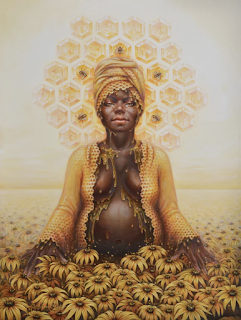Before you travel for work, study, and pleasure, it’s good to create charms and talismans of power. You can also craft your own ritual tools from what you gather in your travels. Nature will often provide you with tools: shells, bark, and stones. In addition, you may also meet new spiritual teachers as you make your way on the pilgrimage that is life. Pay attention and you will learn much and receive many gifts.
A Medicine Wheel shamanic group run by Brooke Tarrant taught a group of drumming novices, myself included, how to make rattles and drums from recycled leather and sheepskin. In fact, all the materials we used to decorate our rattles and drums were found objects: crystals, sand, tiny shells, and sticks from the forest floor. Last, we used “feather medicine” and decorated the rattles with rawhide and found feathers, each with personal totemic meaning. With a final drumming circle and fire ceremony, we blessed the drums and rattles and each other. During the ceremony, we used both the new and old rattles and drums in some immensely powerful energy cleaning and healing. Even physical aches and pains were alleviated with these new tools. Rituals for the road should also be recorded in your Book of Shadows: what you find, who you meet, and what you create. When the spirit moves you, you should be creative. You can construct a sand mandala or take photographs on the beach to preserve your inspiration. One lovely custom from long ago: Upon your return home, create shadowboxes, which are really like little shrines of the sacred objects from the road.

















